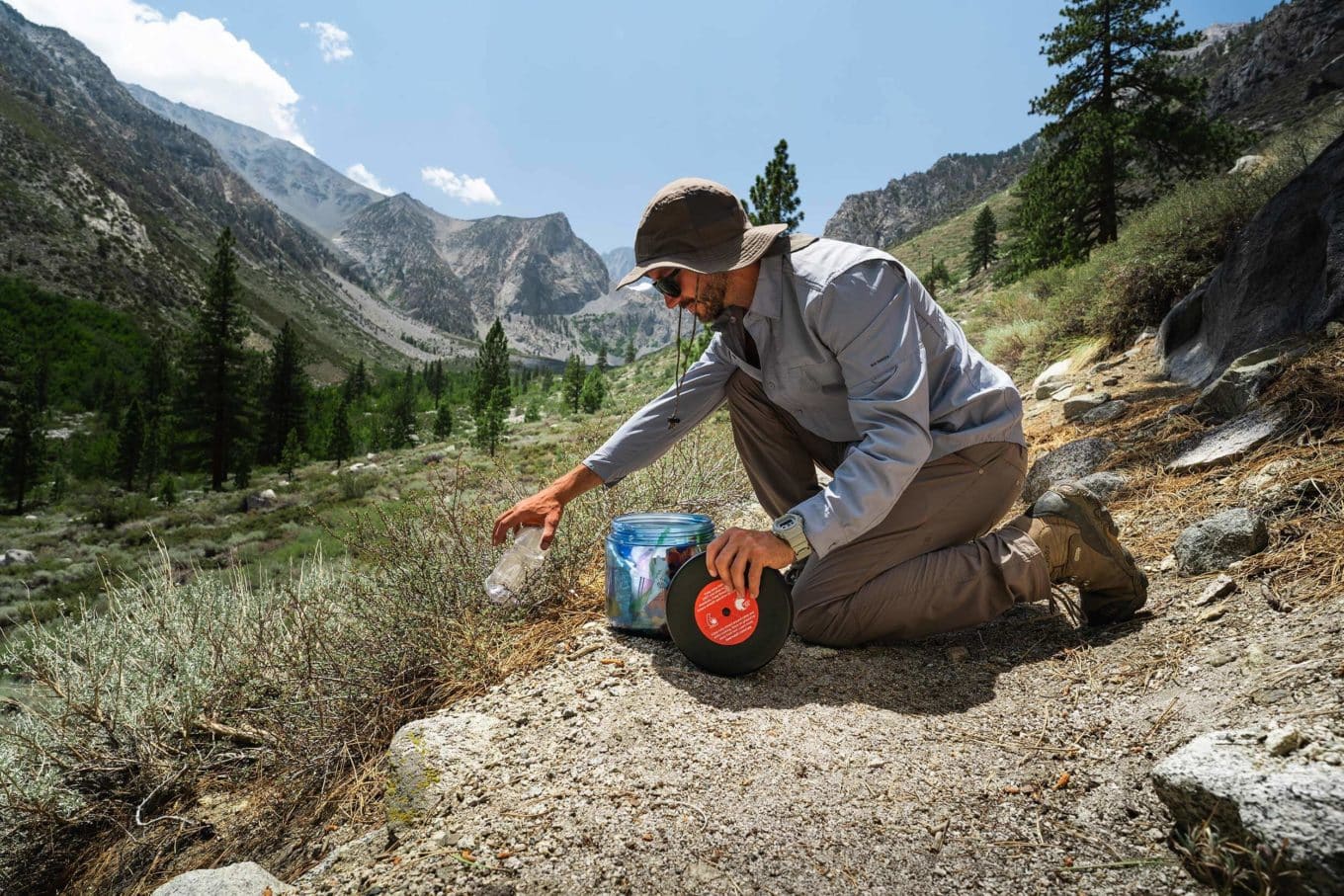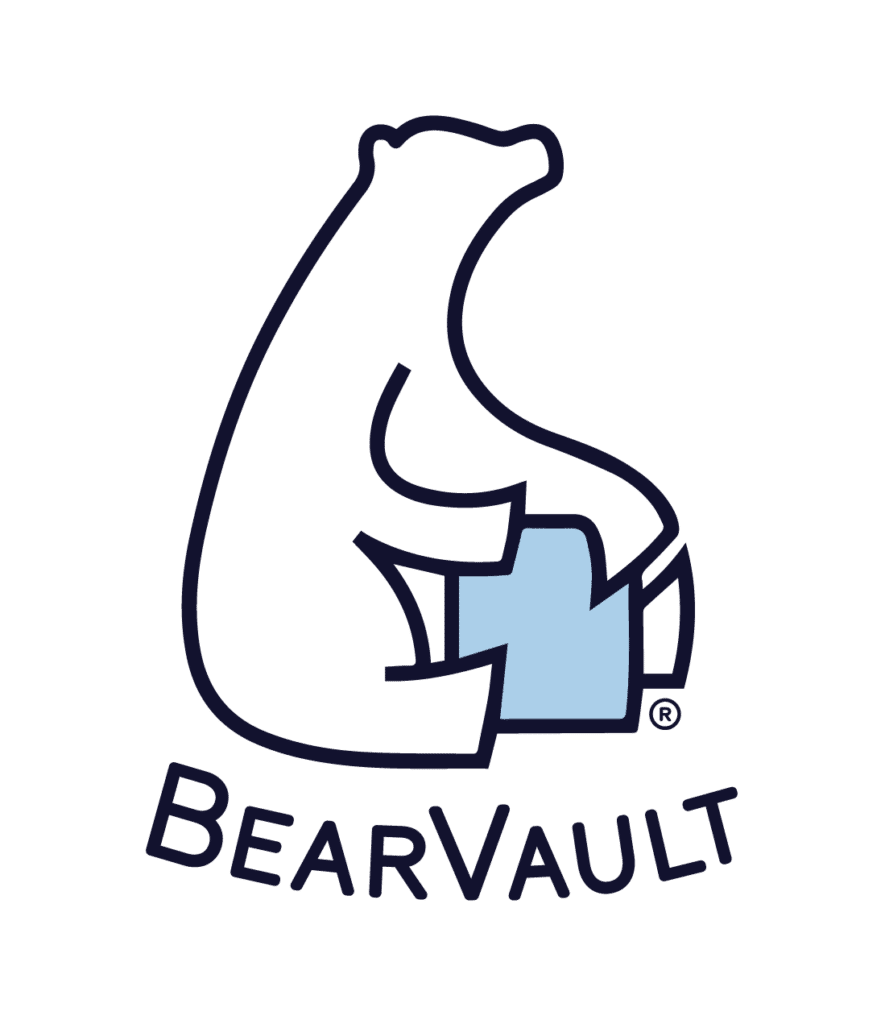Leave No Trace (LNT) is one of the most active organizations promoting responsible adventuring. They’re working to help protect nature while making sure people can enjoy the outdoors by recreating responsibly. So basically, their mission is closely tied to BearVault’s core values, which is why we’re a sponsor of LNT and fully support their principles.
Recently, BearVault had a chance to sit down with two Subaru/Leave No Trace team members, Haley Toy & Gary Huey, to learn more about LNT and how we can help more people enjoy the outdoors safely and responsibly. Gary and Haley began working with LNT in 2020. While the COVID pandemic stymied their early mission, they’ve been traveling across the country educating people about LNT ethics and learning from land managers across the country more recently. They’re one of three traveling teams crisscrossing the country in what many outdoorsy people consider a dream job.
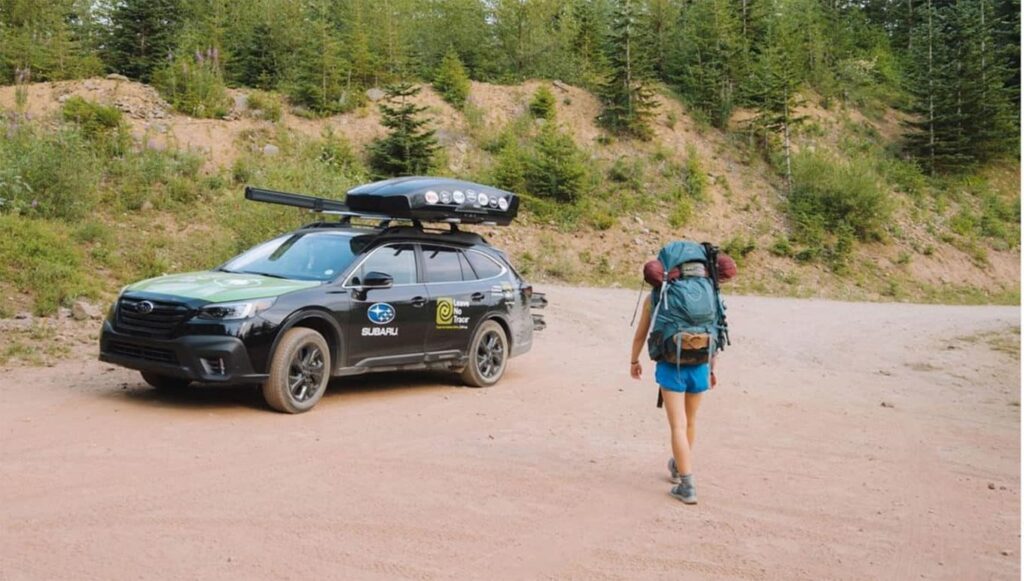
We learned a lot from Haley, Gary, and LNT about how the organization is growing its framework of seven principles to meet the needs of more types of people getting into the outdoors. When LNT launched in 1994 it was primarily aimed at the backpacking community, according to Haley.
“What we like to tell folks is that although these seven principles were originally developed for a backcountry setting and for backpacking and things like that, these days, especially with COVID and a lot of new recreationalists going into the outdoors, there’s been a focus on trying to really make these Leave No Trace principles relevant for all different kinds of audiences and all different kinds of outdoor activities.”
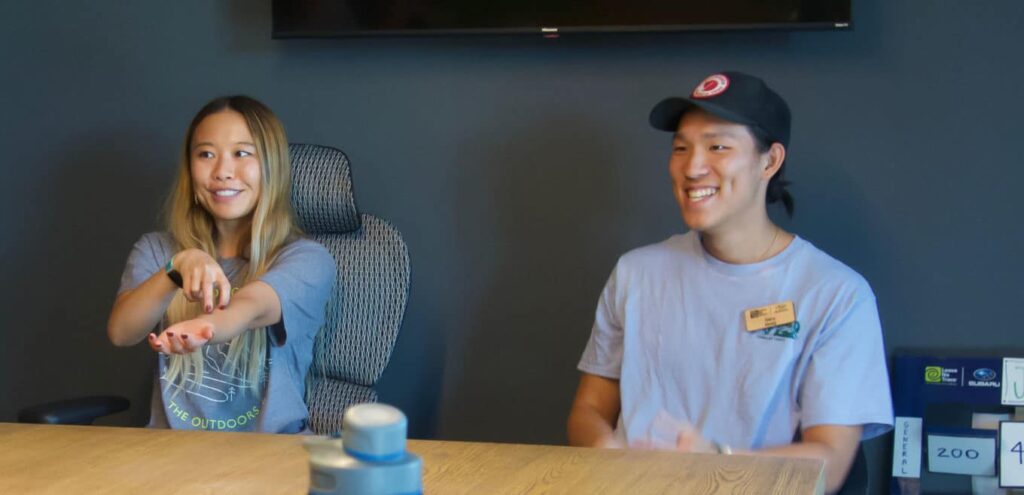
LNT has a great series of reference cards (hangtags) covering different activities, from backpacking to climbing, outdoor ethics, fishing, geocaching and more, explaining how to adopt LNT ethics while doing the outdoor activities you love. They all center around “The 7 Principles”. Gary and Haley gave us some fantastic insight into these principles and how to practice each of them.
Discussion of the 7 Principles
Plan Ahead & Prepare
“That’s about looking at the kind of road conditions, weather conditions, having extra food, water, The 10 Essentials, and whatever you need to do what you want to do outside. If you’re going to a local park, planning may look different than going to backpack Whitney. But if you don’t plan ahead and prepare, it’s harder to do the other seven principles,” Gary says.
Travel & Camp on Durable Surfaces
“When you’re hiking or walking, it’s important to stay on the trail,” Haley explains. “The idea behind it is to avoid expanding the trail or trampling any sensitive vegetation, like wildflowers….When you’re camping it’s making sure that you are camping in a designated camping area… or an area where there’s already been a heavy impact from camping.”
Dispose of Waste Properly
“That includes picking up your trash—whatever you pack in, pack out,” Gary states. “In the backcountry, when you dig a cat hole six to eight inches deep…make it look like you were never there.” He goes on to say that similarly, if you’re urinating in the backcountry, it’s best to do it on a durable surface, like a rock or snow – something that an animal won’t destroy by scavenging from later.
Leave What You Find
“Our slogan is kind of like ‘Take pictures, not things from the environment.’ A lot of things are exactly where they’re meant to be. Some people like to take things for memories, but taking a lot can affect the environment,” Gary, a photographer, notes. Taking photographs is the better practice.
Haley adds: “A part of that as well is not disturbing cultural and historical artifacts and sites… We were just in Yosemite for Facelift, which is a big volunteer-led cleanup throughout the park. They were really trying to emphasize and educate people about what’s considered a historical artifact and what isn’t.” Haley continues, “We talked to an archeologist that works for the National Park Service and he was telling us that a lot of what allows a place to be designated as a cultural site or historical site is that there’s a certain number of artifacts in that area. So if you were to take one home with you…it discounts that site as counting as a historical site.” She says that an artifact is generally any item that’s been in an area for about 60 years, but it could be fewer years in some place.
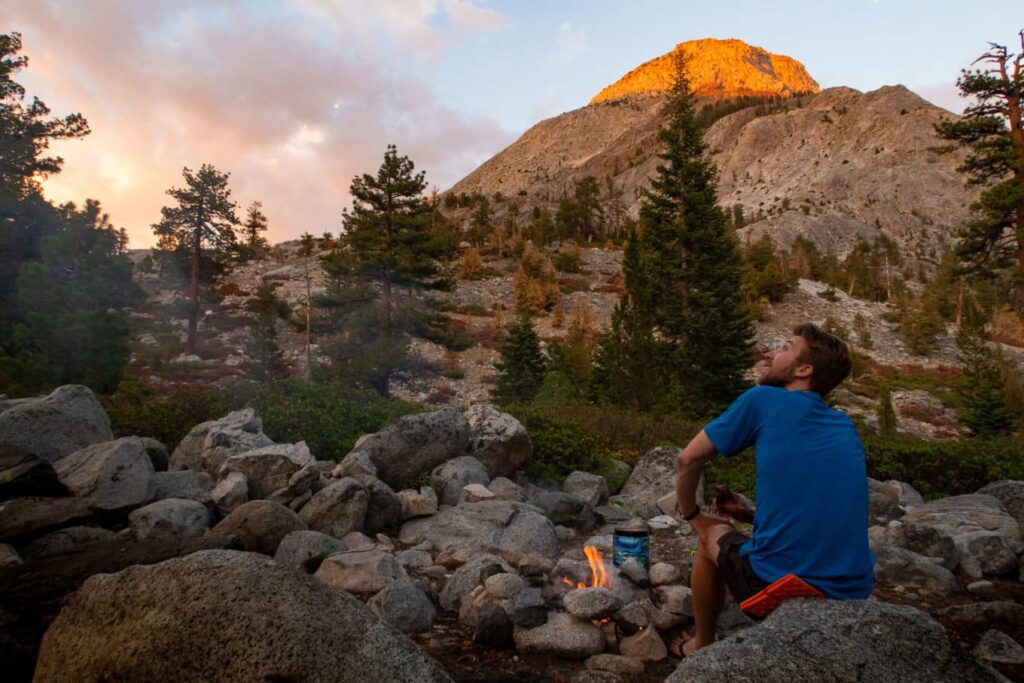
Minimize Campfire Impacts
Haley and Gary recommend using existing fire rings when available and using locally foraged firewood. “If you’re collecting your own firewood make sure that it is dead and down,” Haley says.
“We refer to them as the four Ds: dinky, dead, downed and distant,” Gary adds. It’s best to forage for firewood around your campsite and don’t take too much from one spot. If you’re buying firewood make sure it’s native and not from an invasive species. Also, always follow the local regulations: in some areas collection of any wood is prohibited, since its natural decomposition helps return nutrients to the soil.
“When you’re putting your fire out just make sure that you’ve soaked it and it’s cooled down to the point where it’s cold to the touch,” Haley notes. If you had to build a fire ring for emergency heat, break it down, and after you’ve ensured it’s out, spread the cold ashes.
A big part of respecting wildlife is learning the importance of storing your food properly.
-Haley Toy
Respect Wildlife
“A big part of respecting wildlife is learning the importance of storing your food properly,” Haley says. “Teaching people how to store everything that is smellable in a bear canister is important. Or if that’s not available, use the food storage lockers at a campsite or, worst comes to worst, the car.”
“In terms of viewing wildlife, we teach people to observe from a distance when they see wildlife. We do something called the thumb trick…basically you stick one thumb out, straight in front of you. And if you cover one eye whatever wildlife you’re viewing should be completely covered by your thumb. If you can see any part of the animal behind your thumb, that means you’re standing too close,” Haley says. “It’s a good gauge to make sure that we’re not disturbing wildlife and recognizing that we’re outdoors. In their home, not ours.”
Be Considerate of Other Visitors
“Just understanding the noise you’re making, understanding that everyone goes outside for different reasons—whether it’s to have a good time with a lot of people with family and friends, or if it’s to go out for solitude, it’s respecting that everyone has their own thing,” Gary says. That includes sharing the trails, being considerate of others and respecting quiet hours at a campsite, among other things.
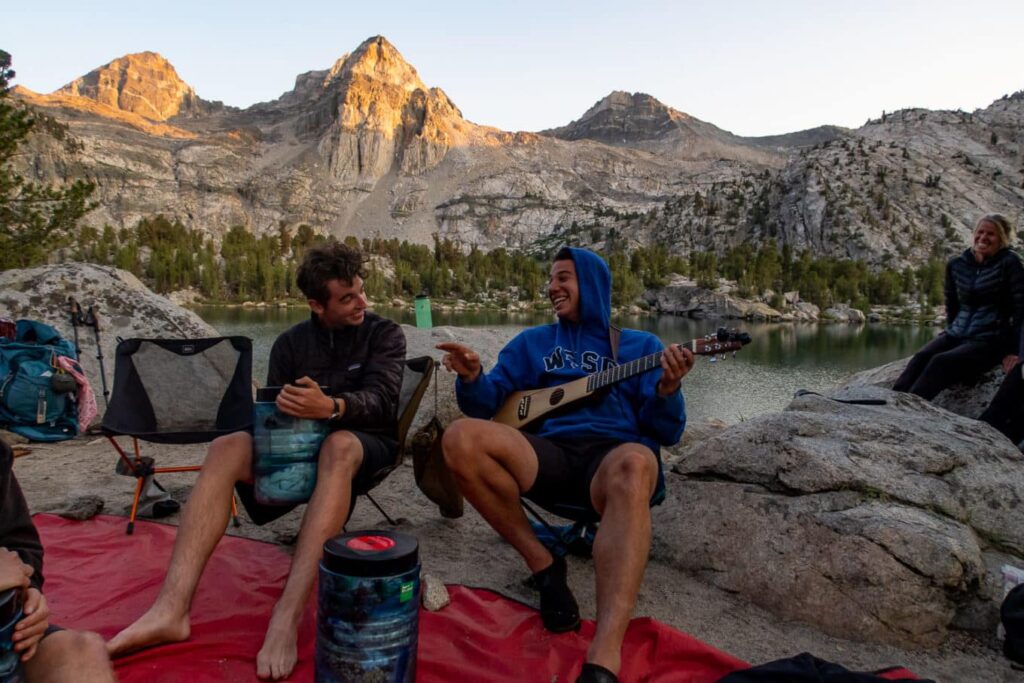
BearVault in Practice
LNT considers bear canisters like BearVaults an important part of its ethics. Our discussion turned to best practices for using bear canisters in the backcountry.
“We recommend that people put their BearVaults away from their campsite and away from their cooking area, using a rough triangle formation,” says Owner Tracy Twist. “We generally recommend 100 feet for black bears and 100 yards for grizzlies, but more importantly, it depends on the local recommendations. Nobody is measuring, so the most important concept is to put a good distance between you in your tent, and things that smell.”
“But whenever you’re traipsing away from your campsite trying to find a place to put your bear canister, and the same goes for peeing in the woods, or finding distant firewood, then we’re sending people out away from the most durable surfaces and that comes with some guilt. How do you reconcile that?,” Twist asks.
Leave No Trace isn’t a set of rules necessarily. It’s a framework to make good decisions.
-Gary Huey
“That’s why we talk about how Leave No Trace isn’t a set of rules necessarily. It’s a framework to make good decisions,” Gary says. “There will always be times where you have to do the safest thing, and you have to choose the best options as well… you have to obviously read the environment and the situation you’re in. These are the best practices that we try to talk about… as a framework.” For instance he says that when camping on durable surfaces like dry grass or sand this isn’t a big deal.
However, Haley explains that when you’re camping in a more pristine area, like an alpine meadow or the underbrush of a forest, it’s better to practice dispersed camping and wandering. “It’s like a little bit of light impact in a few areas versus creating a heavy new impact on the same area,” she says. “If an area is walked on 12 times that’s enough for it to create a sort of social trail or a lasting impact.”
“Sometimes [food storage is] different depending on where we are, how we’re told to store it and how to keep it locked away,” Gary says. “That’s when we say check out the local regulations because they’ll have the most specific information depending on where you’re going.”
“For example when we were in [the] Grand Tetons they said it’s actually okay to store your smellables inside your vehicle versus Yosemite where they said absolutely not,” Haley seconds.
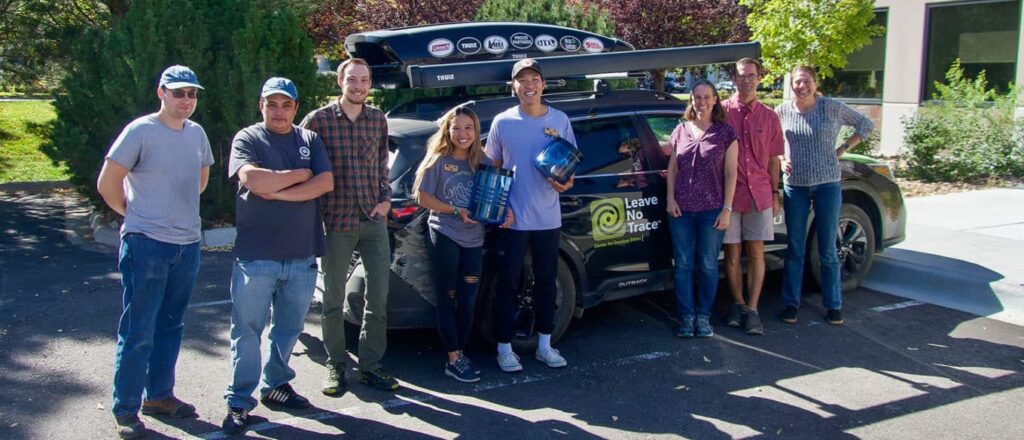
When dishwashing in the backcountry, Haley recommends using minimal soap if any. “If you have to use soap and if you have a strainer, strain out your food scraps, pack those out and then broadcast the gray water,” she says. That will help reduce any scents that might entice interested animals.
Authority of the Resource
In the end LNT is about reducing the cumulative impact of humans in nature, leaving wilderness in as pristine a condition as when you came upon it. Or, perhaps even doing a little more to make it better. It’s pretty easy to carry a trash bag with you to pick up trailside trash. After all, it can take years for even an orange peel to degrade, or worse, organic food waste can contribute to the habituation of animals.
Haley considers following LNT principles to be a way of consciously giving authority to the resource. “The authority of the resource is a form of communication where you’re giving the authority to nature itself,” Haley explains. “When I understood that form of communication, it really changed my motivation to want to do these things… the underlying message is to respect the animals and respect the environment. It doesn’t take a ton of resources to do these things, it just takes the right attitude,” Haley concludes.


